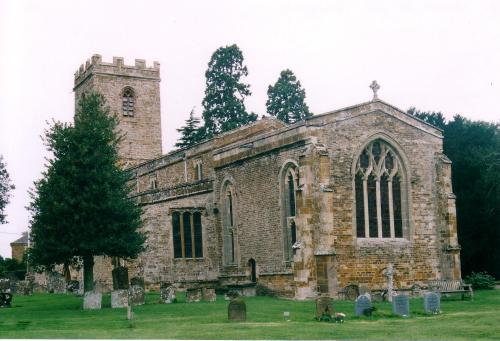Saving the Church of St Lawrence at Marston St Lawrence

On the final day of the Banbury reunion we toured around the various Blencoweshire villages of interest. Those who wandered into the Radstone church were disgusted at the damage by bats, which had taken over more than the belfry, thus rendering the once lovely little church unusable. The church of most Blencowe significance is the one at Marston St Lawrence. Whilst visiting Marston House, Lady Joanna Wellesley informed Peter of the plight of that church. Some lead has been stolen from the roof which is in general need of repair to keep the bats and other vermin from damaging the interior. I noticed the porch and belfry had been closed off since my last visit.
The Churchwardens' Book of Accounts Marston St Lawrence 1758, to the Present shows us that it is ongoing problem.
In the 18th century, the churchwardens repeatedly made payments for the extermination of vermin, namely sparrows, hedgehogs and foxes.
- In 1764: 43 Dozen of Sparrows 7s. 2d. 4 Hedgehogs ls. 4d.
- In 1774: 2 Hedgehogs, 2 Foxes 2s. 8d.
- In 1784: 24 Dozen of Sparrows 4s. 6d.
- In 1794: 25 Dozen of Sparrows 4s. 2d.
- In 1804: 11 Dozen of Sparrows 1s.11d.
In 1834, there were no less than six entries relating to sparrows and payments were made for the extermination of over a hundred dozen. The last reference to sparrows occurs in 1838.
Probably the sparrows were killed because they ate crops. Foxes killed chickens and hedgehogs stole the cows' milk. These days wildlife advocates would be up in arms!
In 1872 Thomas Blencowe, a son of John Jackson Blencowe, was vicar and subscribed £2.10s., John Alexander Blencowe Esq subscribed £3.10s. and John Kilbey, the church warden, 10s.6d. In 2000 a descendant of his, Miss Grace Kilbey, left Marston St Lawrence church a legacy in excess of £100,000! I wonder how that is being used!
If you would like to contribute to the repair and upkeep of the church, please send your donation to Peter, Allen or Anne in your local currency.
After an article in May 2016 on the giant Yew tree near the church, we went looking to find it. At well over 1,000 years old, tradition has it that from this very yew, bows were cut for the Company of Archers, specially formed for the Battle of Edgehill in 1642. It has a massive trunk. From the road it is on the left hand corner of the church yard.